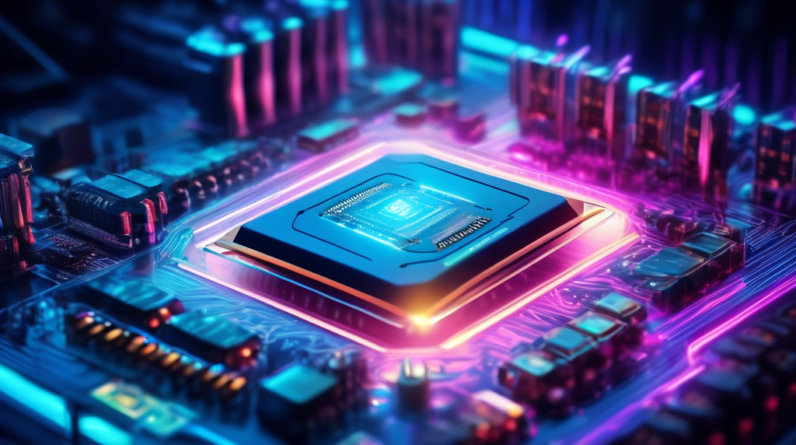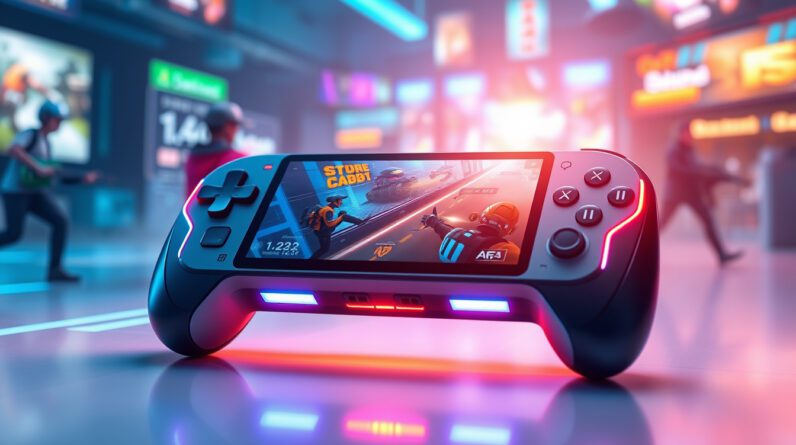
Micron’s Position in the Tech Landscape
Micron Technology, a titan in the memory and storage industry, consistently pushes the boundaries of what’s possible. Their innovations power everything from smartphones and laptops to data centers and autonomous vehicles. Their latest foray, however, has sent ripples of excitement through the tech world. Micron’s groundbreaking graphics memory technology promises to be a game-changer, literally and figuratively, for gamers and AI developers alike.
Unpacking the Power of Graphics Memory
To understand the significance of Micron’s innovation, we first need to delve into the crucial role of graphics memory, often referred to as video RAM or VRAM. This specialized memory type acts as a high-speed bridge between the graphics processing unit (GPU) and the display. It stores the textures, shaders, and other graphical data the GPU needs to render images, videos, and complex 3D environments smoothly and efficiently.
The faster and more capacious the graphics memory, the more detailed and fluid the visuals. This translates to an immersive and breathtaking gaming experience with higher resolutions, faster frame rates, and lifelike special effects. Similarly, in the realm of AI, high-performance graphics memory is essential for tasks like image recognition, natural language processing, and machine learning, where vast datasets need to be processed rapidly.
Micron’s Breakthrough: A New Era of Graphics Memory
Micron’s latest graphics memory technology represents a paradigm shift in both performance and efficiency. While the exact specifications may vary depending on the specific product line, the core advancements revolve around:
1. Unprecedented Speed and Bandwidth:
Micron has leveraged cutting-edge memory technologies like GDDR6X and HBM (High Bandwidth Memory) to achieve unparalleled data transfer rates. This means information flows between the GPU and memory at lightning speed, eliminating bottlenecks and unleashing the full potential of modern graphics processors. Gamers can expect buttery-smooth gameplay even in the most demanding titles, while AI applications can crunch data at unprecedented speeds.
2. Increased Memory Capacity:
Modern games and AI algorithms are becoming increasingly data-hungry. Micron’s new generation of graphics memory addresses this by offering significantly higher capacities. This allows for the storage of larger textures, more complex models, and larger datasets in memory, leading to richer visuals, more realistic simulations, and improved AI accuracy.
3. Enhanced Power Efficiency:
Despite the performance boost, Micron hasn’t compromised on power efficiency. The new memory technology is designed to operate with lower voltage requirements, resulting in reduced power consumption and heat generation. This is a boon for both gamers, who benefit from quieter and cooler-running systems, and data centers, where energy efficiency is paramount.
Impact on Gaming: A Quantum Leap in Visual Fidelity
Micron’s graphics memory innovation is poised to redefine the gaming landscape in several ways:
1. 4K and Beyond: The Era of Ultra-High Resolutions:
The increased bandwidth and capacity provided by Micron’s memory technology pave the way for seamless 4K gaming at high refresh rates. This means gamers can finally experience the pinnacle of visual fidelity, with incredibly sharp and detailed images that bring virtual worlds to life. Furthermore, the technology lays the groundwork for future-proofing, enabling even higher resolutions like 8K as displays and GPUs catch up.
2. Ray Tracing Realism: Immersive Lighting and Reflections:
Ray tracing, a computationally intensive rendering technique that simulates the physical behavior of light, is the holy grail of realistic graphics. Micron’s high-performance memory plays a crucial role in making real-time ray tracing a reality. The faster data access speeds allow for the complex calculations required for ray tracing to be performed quickly, resulting in stunningly realistic reflections, shadows, and global illumination effects.
3. VR and AR: Expanding the Horizons of Immersive Experiences:
Virtual Reality (VR) and Augmented Reality (AR) rely heavily on high-performance graphics memory to deliver immersive and responsive experiences. The low latency and high bandwidth offered by Micron’s technology are essential for maintaining smooth frame rates and minimizing motion sickness in VR. Similarly, in AR, faster memory access enables the real-time blending of virtual objects with the real world, creating more convincing and engaging augmented experiences.
Revolutionizing AI: Fueling the Future of Intelligence
The impact of Micron’s graphics memory technology extends far beyond the realm of gaming. It’s also a key enabler for advancements in artificial intelligence, powering the algorithms that are shaping the future:
1. Accelerating Machine Learning:
Machine learning models, the engine behind AI applications like image recognition and natural language processing, require massive amounts of data to be trained effectively. Micron’s high-bandwidth memory enables these models to access and process data at unprecedented speeds, significantly reducing training times and accelerating the development of sophisticated AI applications. This translates to smarter virtual assistants, more accurate medical diagnoses, and improved fraud detection systems.
2. Powering Deep Learning:
Deep learning, a subset of machine learning that involves training artificial neural networks, demands even more computational power and memory bandwidth. Micron’s memory technology, particularly HBM, is tailor-made for these demanding workloads. Its ability to handle massive datasets and complex computations makes it possible to train deeper and more sophisticated neural networks, leading to breakthroughs in areas like autonomous driving, drug discovery, and personalized medicine.
3. Enabling Edge AI:
Edge AI refers to the deployment of AI algorithms directly on devices like smartphones, drones, and industrial sensors. This eliminates the need to send data to the cloud for processing, reducing latency and improving privacy. However, edge devices have limited memory and processing power. Micron’s efficient and high-performance memory solutions are instrumental in enabling AI processing on the edge, paving the way for smarter and more responsive devices.
The Future is Bright: A New Dawn of Innovation
Micron’s groundbreaking graphics memory technology is not just an incremental improvement; it’s a fundamental shift that will ripple through the technology landscape for years to come. As games continue to push the boundaries of visual fidelity and AI becomes increasingly integrated into our lives, the demand for faster, more efficient, and larger-capacity memory will only grow.
Micron, with its relentless pursuit of innovation, is well-positioned to lead this charge. The company’s commitment to pushing the limits of memory technology is evident in its latest breakthrough, and the ripple effects will be felt across industries, shaping the future of gaming, AI, and beyond. As we enter this exciting new era of technological advancement, one thing is clear: Micron’s innovations in graphics memory will be at the forefront, driving progress and transforming the way we live, work, and play.




